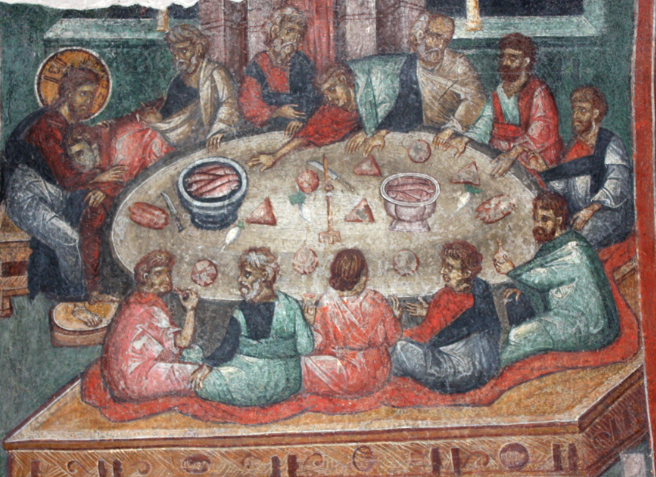
Early Christian liturgies refer to the formal patterns of worship practiced by Christians in the first few centuries after Christ’s death and resurrection. These liturgies evolved over time and varied by region, reflecting the theological, cultural, and linguistic diversity of the early Christian communities. Some of the most significant early Christian liturgies include:
1. The Liturgy of Jerusalem (or the Liturgy of St. James): Believed to be the oldest, this liturgy is attributed to James, the brother of Jesus and first bishop of Jerusalem. It reflects the practices of the early Christian community in Jerusalem.
Date : Traditionally dated to the late 1st century, but the liturgy as it exists today likely underwent development until the 4th or 5th century.
Used by: The Syrian Orthodox Church, the Syrian Catholic Church, and the Indian Orthodox Church, among others. It is also celebrated occasionally in the Eastern Orthodox Church.
2. The Liturgy of Antioch: This is another ancient liturgy that later influenced the development of the Byzantine Rite, used by the Eastern Orthodox Church and other Byzantine Christians. The Divine Liturgy of John Chrysostom and the Divine Liturgy of Basil the Great, both of which are used in the Eastern Orthodox Church today, have their roots in the Antiochene tradition.
Specific authorship is not traditionally assigned to a single individual, but Saint John Chrysostom (c. 347–407) and Saint Basil the Great (c. 329–379) are associated with later developments in the Antiochene tradition.
The Liturgies are predominantly used by the Eastern Orthodox Church (e.g., Greek Orthodox, Russian Orthodox) and the Byzantine Rite Catholics.
Dates: The foundational elements might date from the 1st or 2nd century, with significant developments through the 4th century.
3. The Liturgy of Alexandria: Attributed to Saint Mark the Evangelist, this liturgy is the foundation of the Coptic Liturgy of Saint Cyril, which is still used in the Coptic Orthodox Church. The Alexandrian Rite also influenced the Ethiopian and Eritrean liturgies.
Attributed to Mark the Evangelist, the founder of the Church in Alexandria.
Date: Traditionally believed to have originated in the 1st century, though the liturgy as practiced today has been shaped by later modifications up to the 4th century.
Used by: The Coptic Orthodox Church primarily uses the Liturgy of Saint Cyril, which is derived from the Liturgy of Saint Mark. The Ethiopian Orthodox Tewahedo Church and the Eritrean Orthodox Tewahedo Church also use liturgies derived from the Alexandrian tradition.
4. The Roman Liturgy: This evolved into what is known today as the Roman Rite, the primary liturgy of the Roman Catholic Church. The earliest form of the Roman Rite is the Liturgy of the Presanctified, attributed to Pope Gregory the Great in the 6th century, though the mass has undergone significant reforms since then, most notably during the Council of Trent in the 16th century and the Second Vatican Council in the 20th century.
Attributed to: While not attributed to a single individual in its earliest form, Pope Gregory the Great (c. 540–604) is credited with significant revisions and contributions, leading to the Gregorian Sacramentary.
Date : The Roman Liturgy developed over the first few centuries, with Gregory the Great’s contributions dating to the late 6th century.
Used by: The Roman Catholic Church. The Roman Rite is the most widely used liturgical rite in the Catholic Church today. The Ordinary Form (post-Vatican II) and the Extraordinary Form (the Tridentine Mass, which is closer to pre-Vatican II practices) are both in use.
5. The Gallican Rite: This was the liturgy used in Gaul (modern-day France and parts of Western Europe) before the Carolingian reforms in the 8th century sought to replace it with the Roman Rite. The Gallican Rite had its own unique elements and characteristics, distinct from the Roman practice.
Attributed to : There is no specific attribution to a single leader for the creation of the Gallican Rite. It likely developed locally in Gaul (modern-day France and surrounding areas).
Date: It emerged in the 5th century, with elements predating this and continuing to develop until it was supplanted by the Roman Rite in the 8th century.
The original Gallican Rite is no longer in use, having been supplanted by the Roman Rite in the early Middle Ages. However, elements of the Gallican tradition have influenced the development of various Western liturgies, including some Western Rite Orthodox liturgies and certain local uses within the Roman Catholic Church (e.g., the Ambrosian Rite).
6. The Ambrosian Rite : Named after Saint Ambrose, bishop of Milan, this liturgy is still celebrated in Milan and surrounding areas. It represents a unique tradition within the Western Church, distinct from the Roman Rite.
Attributed to: Saint Ambrose, bishop of Milan (c. 340–397), though the rite as it is known today was likely shaped by later contributions.
Date: The core elements of the rite likely date from the 4th century, with further developments over the following centuries.
Used by: The Catholic Archdiocese of Milan. The Ambrosian Rite has maintained its distinct character and is still celebrated in Milan and some surrounding areas in Italy.
These liturgies formed the basis for the development of Christian worship and have influenced the various liturgical traditions that exist within Christianity today. Each liturgy has its own unique history, language, and theological emphasis, reflecting the diversity of the early Christian world.